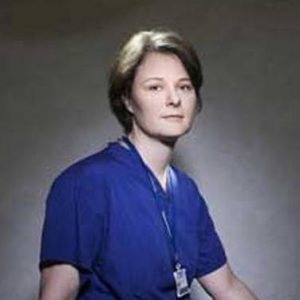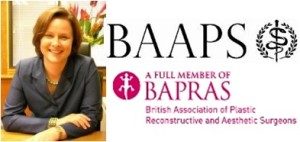MISS BARBARA JEMEC
Plastic Surgeon
FRCS (Plast.) EBOPRAS, MD
Founding Chairman of the charity BFIRST, the BAPRAS charity
Member of the BSSH
She currently sits as a member of Council for BAPRAS
Regional Speciality Advisor (Plastic Surgery),
Royal College of Surgeons
ENGLAND
Fun Fact: Surgeons in the UK are referred to as either Mr/Miss/Ms/Mrs
PIZAZZ NEWS readers, it is with sincere joy that I can present you with this rare and significant opportunity to speak openly with an internationally acclaimed female Plastic Surgeon. Astonishingly humble and gracious, I present to you Miss Barbara Jemec.
Thank-you Miss Jemec for joining us at PIZAZZ NEWS, it is a privilege and honour to be able to introduce you as not only a surgical doctor, but as someone who formed a charity and trains doctors in third-world countries to help alleviate a great deal of suffering and distress for the poor.
Q
You gave an interview for The Independent (British on-line Newspaper) where you said;
“I wanted to become a plastic surgeon from an early age, because my father was a plastic surgeon. He was always helping people, making them whole again, making them function.”
It was you however who had to get ‘the marks’ that was necessary to achieve the reality of this goal. What is ‘the reality’, the bottom-line, the amount of study and learning necessary to even get the grades to qualify to get into medicine when you were in high school?
A To get into medicine in Denmark you had to have obtained fairly high grades in your A-level equivalent exams, but we didn’t have entry exams, or interviews for university like the students have in the UK . To get in, we did however have to have passed a Latin exam, because all diagnoses are still in Latin. I have always said that studying medicine is about having a good chair, light and desk…and a good memory and plenty of motivation.
The study gets interesting when you understand it was useful to learn all the anatomy, pharmacology and pathology by heart, and you start putting it all together and make a diagnosis and a treatment plan and understand why it works!
Q
So after high school you went on to university to study Medicine, how many years was that and what were some of the struggles or obstacles you encountered to complete the subjects and pass the units? Where did you attend University?
A: Medicine in Denmark in the 80’ies was 6 1/2 years of studying and clinical. I honestly don’t remember that much about the exams, apart from that there seemed to be an awful lot of them …..
Q
Did you have any assistance to help you with your studies at the university? Was the environment collegial and supportive or was it competitive? Was it students pitted against students and bitter teachers ‘stuck’ teaching?
A There were lectures, our teachers were from Denmark, Norway and Sweden, our textbooks were in Danish and English, and it was generally a supportive environment as far as I remember! My dad (now retired) was also a surgeon, and knew all anatomy backwards. He grilled me on some of the surgical topics.
I was a member of a group which opposed animal experiments in the University setting for teaching (there were dissection of frogs and demonstration of blood pressure on rabbits) and we donated an interactive disc to the university for students to use, if they objected to the animal models. It was a lot more work to write the essays on the basis of the results only, not having attended the experiments, but I still believe it was the right thing to do.
Q
I have to ask you about Cadavers, what was it like to practice on a corpse and did you or any of your fellow colleagues struggle with this learning process?
A We were introduced gently to the subject – you first get a bone and have to learn all the names of the different part of the bone, like the insertions and origins of the muscles of that bone. Then you get a bone with some muscles attached and only much later do you get a whole cadaver to dissect. We treated our cadaver with respect, carefully preserving all the tissue, so that it could all be buried together. There was absolutely none of the shenanigans you read about or see in television series with the cadavers. None.
Q
After your degree how many more years of training was necessary before you could qualify as a Plastic Surgeon?
A It took 12 years to become a Consultant Plastic Surgeon, this included 1 year as a pre-registration House Officer, 4 years as a Senior House Officer in A&E, ENT, orthopaedic, general and plastic surgery, 2 years of research which gave me a MD and then 5 years of specialist training in Plastic Surgery.
(Another name for this is PASSION).
Q
In the same interview with The Independent you said,
“It’s becoming easier for women to train as plastic surgeons. At least half of my juniors are women, which is fantastic. Having said that, only 10 per cent of plastic surgeons in Britain are women.”
Why are there so few women practicing in this area?
A
Not many women have (until now) chosen surgery per se, as a career because of the hours (before the European Working Time Directive, which reduced the weekly hours to 48), the perceived strength necessary to do the surgery and I guess, because it was never promoted as being for girls.
Now we have research showing patients do better after having been operated by female surgeons!
Q
This is an extract of the interview you did for The Sunday Times;
Angelica Kavouni, 48, is a consultant plastic surgeon, married to a plastic surgeon, with whom she has two sons, aged 12 and 10. She decided she wanted a breast uplift five years ago. “I had my first son when I was 37 and there were some changes to my breasts, but I knew I wanted to have another child, so I said, ‘I’m going to wait.’ ” The yo-yo effect of weight gain – two and a half stone with each pregnancy – and weight loss, plus three months of breastfeeding for each child, “wasn’t very kind to my breasts”, Kavouni explains.
“It wasn’t that I lost volume – I am still a C-cup – but the shape had changed. They weren’t as firm and also there were some stretch marks.” “I do a lot of post-pregnancy surgery and so I said, ‘I need to have this done. It makes a big difference to your confidence and it’s also easier to choose bikinis and tops. I moaned about it to my husband. I would have asked him [to do it], but you are not meant to operate on your family.”
So to whom did she entrust her breasts?
“Barbara was the obvious choice. I felt comfortable. She’s a very good surgeon,” says Kavouni. The skill of a cosmetic surgeon – unlike, say, a cardiac surgeon – is obviously very evident. Some surgeons have signature styles or conjure, perhaps unconsciously, their ideal. “There are classic things plastic surgeons have decided are beautiful on women – a certain angle between the upper lip and nose,” Jemec explains. A good cosmetic surgeon is one who works with, not against, nature. Plus, Jemec was a woman. And while that’s not always appealing to female patients – “I had one woman who wanted to have a very, very tight tummy tuck. And she said, ‘I’m sure you won’t pull hard enough, because you’re a woman and not strong enough,’ ” reports Jemec – for Kavouni it was reassuring. “I just felt more comfortable,” she says.
How often do you encounter obvious and not so obvious gender bias and discrimination in your capacity as a highly qualified and experienced surgeon?
A
There is less and less of this, though I still encounter patients, who , I think would rather have a male surgeon. Perhaps it is more comforting for them for some reason, I don’t know. Many are very happy with a woman, and most, to be honest, don’t care what sex their surgeon is! Which is how it should be.
(I agree)
Q
What advice do you have for women who encounter gender discrimination in the workplace or as interns?
A
To call it. Don’t stand for it. There is no place for it.
Q
Have you ever had to correct another surgeon’s mistake? And how do you get the message across to women that they could be endangering their lives by having Plastic Surgery (Cosmetic Surgery) in developing countries?
A I think most surgeons have corrected some other surgeon’s mistake or complication. The rules in surgery are usually there for a reason, such as if you have fused fingers, only release one side at the time, but I remember one case in Ghana, where a visiting surgeon obviously hadn’t adhered to this rule and caused the patient to lose a finger by releasing it on both sides. That was not OK.
Q
In that same interview for The Sunday Times the following extract reveals;
Men “don’t know what it feels like to have breasts”, continues Jemec. “Some [male] surgeons will do breasts supersized. And the rest of us are going, ‘Hmm, I don’t think so.’ If you have a small frame you don’t need breasts that are G-cup. If a woman says to me, ‘My boyfriend wants me to have big breasts,’ I say, ‘Well, I’ll put the implants in him.’ ”….
Within six weeks of the operation, Kavouni was “more or less back to normal”. And she emerged changed. “I am more empathetic,” she says. “You really do feel scared when you’re having surgery.” She now “reassures” her patients “in a more emotional way”.
I have to give you a high-five and a ‘YAS’ on your brilliant come back by the way. When your friend and colleague, surgeon Miss Kavouni had her operation, she was scared and developed new ways to empathise with her patients. Doctors must surely know that as more information is available through the internet, patients can research risks associated with surgery and flip out! How do you teach your own students to think about their ‘bedside’ manner? Was this aspect of patient care something you learnt during your own training as a doctor?
A
I try to convey the old teaching that you must think of patients as your relatives, as in ‘what would you do if it was your mum?’, and consider the impact of what you say. We weren’t taught this as such, but we all learn from each other and I hope to make the trainees think by discussing their interactions afterwards with them
Q
I saw this meme on your Twitter feed as a message to your medical students.
Q
What kind of shenanigans do your students try to get away with?
A
Ha ha .They don’t get away with anything. I know everything!
(She’s a tough cookie, I like her.)
Q
When you are not working what shows or movies do you like to watch?
A
I am looking forward to seeing the new Bladerunner as it is one of my all time favourite movies. We love going to the theatre and just saw Romantics Anonymous at the Globe, which was fantastic and Oslo at the National, which was also really good.
Q
When the last time you had a holiday and what did you do?
A
My last holiday was visiting parents, and sleeping a lot! Plus trying to help out at home as much as possible.
Q
You recently appeared on a show called ‘Dr Christian Will See You Now.”
Can you share an extract of the show with us?
- [At this time of writing we are awaiting for airing to take place so we can show it. PIZAZZ NEWS readers thank-you for your patience and we will include the segment as soon as practicable.]
Q
What is your role with BAPRAS (British Association of Plastic Reconstructive and Aesthetic Surgeons)?
A
I represent the London region, which is about 90 plastic surgeons, sit on the Communications Committee, which aims to promote reconstructive surgery and inform people about what we do and I make sure that advertised job pans for consultant plastic surgeons in London are fair and stick to the rules of the Royal College of Surgeons.
Q
Where and when did you first gain exposure to the realisation that not every country affords its citizens health care?
A
Good question. Not sure, but the reason I studied medicine was because I was convinced (and still am) that people do not have as much surplus as society needs if they have a physical or mental problem.
There are no beggars on the street in countries with adequate health and social care.
Q
Which countries have you worked in as a Plastic Surgeon?
A
U.K, Denmark, Sierra Leone, Mali, Ghana, Bolivia and Bangladesh.
Q
You started BFIRST – British Foundation for International Reconstructive Surgery and Training.
BFIRST supports projects across the developing world to train surgeons in their local environment to effectively manage devastating injuries.
Which countries do you currently work with in your charity and what are the obstacles your charity faces?
Sri Lanka
In Sri Lanka, we teach congenital hand and the management of vascular malformations. Approximately 1000 children a year are born with a congenital hand problem, and to date there has been no provision of surgery for these patients. We have enlisted the help of a radiologist to teach the local doctors how to embolize vascular malformations, which will help reduce their size and importantly reduce the blood loss at surgery, which can be fatal, if uncontrolled and is the major obstacle for surgery to vascular malformations.
Nepal
In Nepal we are concentrating on lower limb reconstruction after trauma, training local surgeons to use microsurgical techniques in the resurfacing of legs. Especially in a rural community the use of both legs is paramount for the survival and independence of the local people and the recent earthquakes have only highlighted and increased the need for this reconstructive option.
Ethiopia
In April we visited Ethiopia for the first time, in conjunction with the British Society for Surgery of the Hand, to establish a hand surgical project. The Health and Safety aspect of many jobs is not high priority and devastating hand injuries are common. Without usable hands, patients are often left to beg to survive and cannot take care of themselves of their family.
Cambodia
Cambodia is our longest running project, here our project has resulted in local surgeons now performing their own operations for brachial plexus injuries, which allow the patients to use their previously flail arms again. Brachial Plexus injuries are common in 70% of all the road traffic accidents in a country where the most common mode of transportation is a moped or motorcycle. A brachial plexus injury severs all the nerves to the arm and renders it useless but it can be re-animated, by connecting other nerves or muscles.
Vietnam
In Vietnam are onto the second round of ear reconstruction training. People born without ears or having lost them in trauma, inching burns can have new ears made of rib cartilage and local skin.
Our other project in Vietnam is also for congenital hand deformities and brachial plexus injuries in babies.
Bangladesh
In Bangladesh, we are concentrating on Burns – 385.000 people are burnt a year, half of these are children and 20% are left with a permanent disability as direct result of the burn. 1/3 of the burns are due to electricity and we concentrate birds care and hand function.
Why Hands and Burns?
Because of the many people who suffer burns injuries in Bangladesh every year and the many injuries which stem from electrical burns nerves and tendons in the hand are literally burnt away, which if of course makes the hands useless. In a country where the majority of people work in agriculture and service occupations, the use of your hands is paramount. Well in fact it is paramount to anyone, no matter what you do, but here a useful hand can be the difference between having to beg for food and holding down a job, so you can feed yourself. You can reconstruct the function of these hands with tendon transfers – so using other tendons which are still intact, local flaps (coverage from the surrounding skin and muscles) and nerve grafts (from less important nerves in for instance the foot and leg), so they can become useful again.http://www.bfirst.org.uk/project-reports/bangladesh-december-2016/
As we are a small charity, we don’t have fund raisers, the BAPRAS office does most of our admin for free but, we always could use more funds, even though our volunteers give their time and expertise freely and a lot of our consultants pay for themselves.
What I’d love would be if the surgeons could concentrate on the surgery and training completely, without having to also be the event organisers and fundraisers. That’s not really what we do best!
(Amazing, Amazing, Amazing)
Q
What can people do to help your charity?
A: We need money and contacts: to get free flights, free IT input, free fundraisers and organisers. Contacts to other NGOs and government bodies in the countries we visit.
*ANYONE reading this – if there is a way in which you think you can help or support BFIRST please contact BFIRST directly. This is a charity which does good works and provides much needed services to countries in dire need. Kindly share and post this information. Thank-you wonderful Pizazz News readers.
BFIRST
Q
You also offer a wide variety of treatments and surgeries in your practice, how can patients reach you to make an appointment for a consultation?
A
In my private practice I can be reached on 0207 467 3004 or 07397 562 392, or through 152 Harley Street.
(If calling from outside the UK include the prefix area code for your country.)
Additional Information regarding the types of surgery’s available can be found through Miss Jemec’s website:
Miss Barbara Jemec, thank-you so much for joining us at PIZAZZ NEWS, it’s been a total pleasure, you are AWESOME, and I am so glad you are a part of the Positive Thinking Movement. ☺










 Total Visit : 219106
Total Visit : 219106 Who's Online : 1
Who's Online : 1